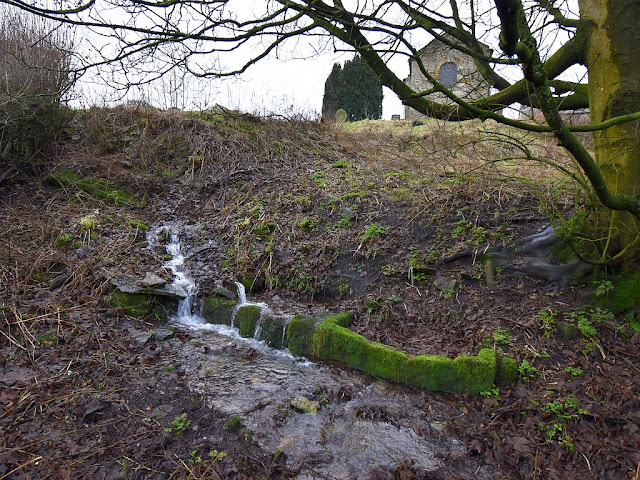Gormire lake is located at the foot of Sutton Bank, 4 miles to the east of Thirsk.
The lake sits in a secluded location in woodland below the high rocky cliffs along the edge of Sutton bank. The land at this point rises abruptly from the low lying vale of York in the west, to the higher ground of the Hambleton Hills and moorlands further east. This steep rise forms a west facing escarpment with sheer rock faces known as the Whitestone cliffs or White Mare Crags, from the top of which there are extensive views across the vale to the Yorkshire Dales.
The half-moon shaped lake is about 1 mile in circumference, and sits in a hollow below the cliffs. This location effectively hides the lake, which can only really be seen from the cliff tops above. Gormire is one of only four naturally formed lakes in Yorkshire, and this, along with its hidden location, seems to have led to it featuring strongly in local folklore.
In the past it was believed that the centre of the lake was bottomless,
and that a castle or small town once stood there. Writing in the mid 1800's,
William Grainge noted ...
"It is not to be expected that such a water in such a situation should be
without its legend. Here stood,— says the voice of tradition,;—a long time
ago, a populous town; one night, suddenly, the earth opened and swallowed it
up, and in its place a lake, without a bottom, appeared."
Grainge also noted another curious feature of the lake .... "There is no supply of water but what is derived from rain or unseen springs; and the only outlet is a swallow (hole) in the rock, on the side nearest the cliff, into which, in a wet season, the water rushes with great rapidity; popular report says it finds its way under the mountain, and again emerges to daylight near the village of Cold Kirby, some three miles distant." (Grainge, 1859)
The wet weather in December 2023, caused the water level in the lake to rise, and as a result a stream began to flow out on its east side. This stream only runs for a few metres and then forms a pool at the foot of the steep hillside, with the water then disappearing into a crevice or sink hole beneath a Holly tree on the bank.

|
|
Stream flowing out of the lake |

|
|
Water from the lake flowing down the hole in the bank. |
This disappearing stream must have always raised the question - where does the water actually go? - and gave rise to the belief that it re-emerged at the springs near the church in Cold Kirby. This village is located 2 miles to north east of the lake, where the land drops down on the other side of Sutton Bank, but the village itself is actually higher than the lake, so this would require the water to flow up hill.

|
|
One of the springs below Cold Kirby church |
A few years before William Grainge, Thomas Gill also noted the sink hole
by the lake, and mentioned another local belief connected with it
...
"There is a recess on the side near the cliff, where the waters
find egress amongst the rocks. The grand-dames relate that a goose possessed
of more courage than discretion, penetrated this dark track of the waters,
and made its exit near Kirbymoorside, stripped of all its feathers." (Gill,
1852)
Kirbymoorside is 12 miles to the east of Gormire lake, and it is interesting to note that there is a similar tale connected with Kirkdale Cave to the west of Kirbymoorside. Rather than a goose, it was a chicken which entered Kirkdale cave and later reappeared at another cave in Kirbymoorside itself. This subterranean journey must have been a tight squeeze, as this bird also came out minus its feathers.
These stories suggest that in the past there was a belief in an underground
connection between Gormire lake and the springs and caves further east towards
Kirbymoorside. Add to this the story of the waters covering a submerged town,
and that the lake was bottomless, shows how Gormire has long been a focus of
folklore and legend. Even the monks of Byland Abbey regarded the lake as an
uncanny place - but that's another story.
References
Gill, T (1852) Vallis Eboracensis
Grainge, W. (1859) Vale of Mowbray



Post a Comment